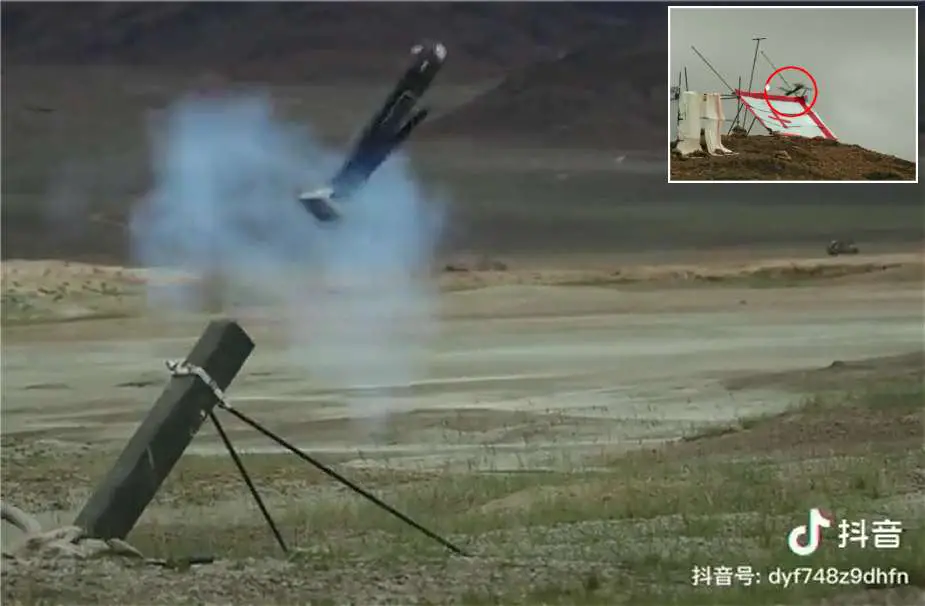China Unveils XS101 New Autonomous Loitering Munition Mirroring US Switchblade 300
In a significant advancement in unmanned aerial technology, China has recently unveiled the XS101, a new loitering munition, as per video footage released by a Chinese TV News Channel. This development marks a crucial step in China's defense capabilities, closely mirroring the American Switchblade 300 drone.
Follow Army Recognition on Google News at this link

China has developed loitering munition very similar to the American Switchblade 300. (Picture source video footage Chinese TV)
The extension of the development of loitering munitions, commonly referred to as kamikaze drones, has been notably influenced by the ongoing conflict in Ukraine and a rising global demand. The war in Ukraine has served as a practical demonstration of the effectiveness of these drones in modern warfare. Their usage for surveillance, precision targeting, and attacking high-value targets has underlined their strategic value, leading to a surge in interest and demand from various nations. This interest is not only for defensive purposes but also as a potential game-changer in asymmetrical warfare scenarios, where smaller forces can effectively challenge larger, more conventional military powers.
Simultaneously, the technological advancement in drone technology, driven by both military and civilian research, has led to more sophisticated, efficient, and cost-effective loitering munitions. These advancements include improvements in stealth capabilities, payload capacity, flight duration, and autonomous targeting systems. The integration of artificial intelligence has further enhanced their operational efficiency, making them more autonomous and capable of complex decision-making during missions.
Furthermore, the international arms market has responded to this demand. Many countries, recognizing the strategic advantages of these munitions, have either started developing their own programs or procuring them from leading manufacturers. This has led to a proliferation of these weapons, raising concerns about their impact on global security dynamics and the potential for escalating conflicts.
The XS101, like its American counterpart, is launched from a portable tube launcher, making it highly mobile and user-friendly for ground forces. Its design and operational features bear a striking resemblance to the American-made Switchblade 300, suggesting that China may be paralleling American drone technology.
A remarkable achievement of the XS101 was demonstrated when it was successfully launched at an altitude of 4,600 meters, hitting its target with precision. This feat underscores the advanced autonomous capabilities of the drone, which can independently navigate towards a designated area or target without the need for continuous human guidance.
However, the system is not entirely devoid of human oversight. Operators retain the ability to make crucial course adjustments or even abort missions in real time. This feature is particularly important in scenarios where unforeseen circumstances, such as the presence of civilians, may necessitate a change in the drone's course of action.
The introduction of the XS101 represents a significant leap in China's drone technology, potentially altering the landscape of unmanned aerial warfare. Its similarities to the American Switchblade 300 raise questions about the extent of technological exchange or espionage, a topic that remains a point of interest and concern among global military analysts.
As countries continue to advance their unmanned aerial capabilities, the Chinese XS101's development signifies a new era in autonomous warfare technology, where precision and human judgment play pivotal roles in combat scenarios.
Defense News November 2023


























